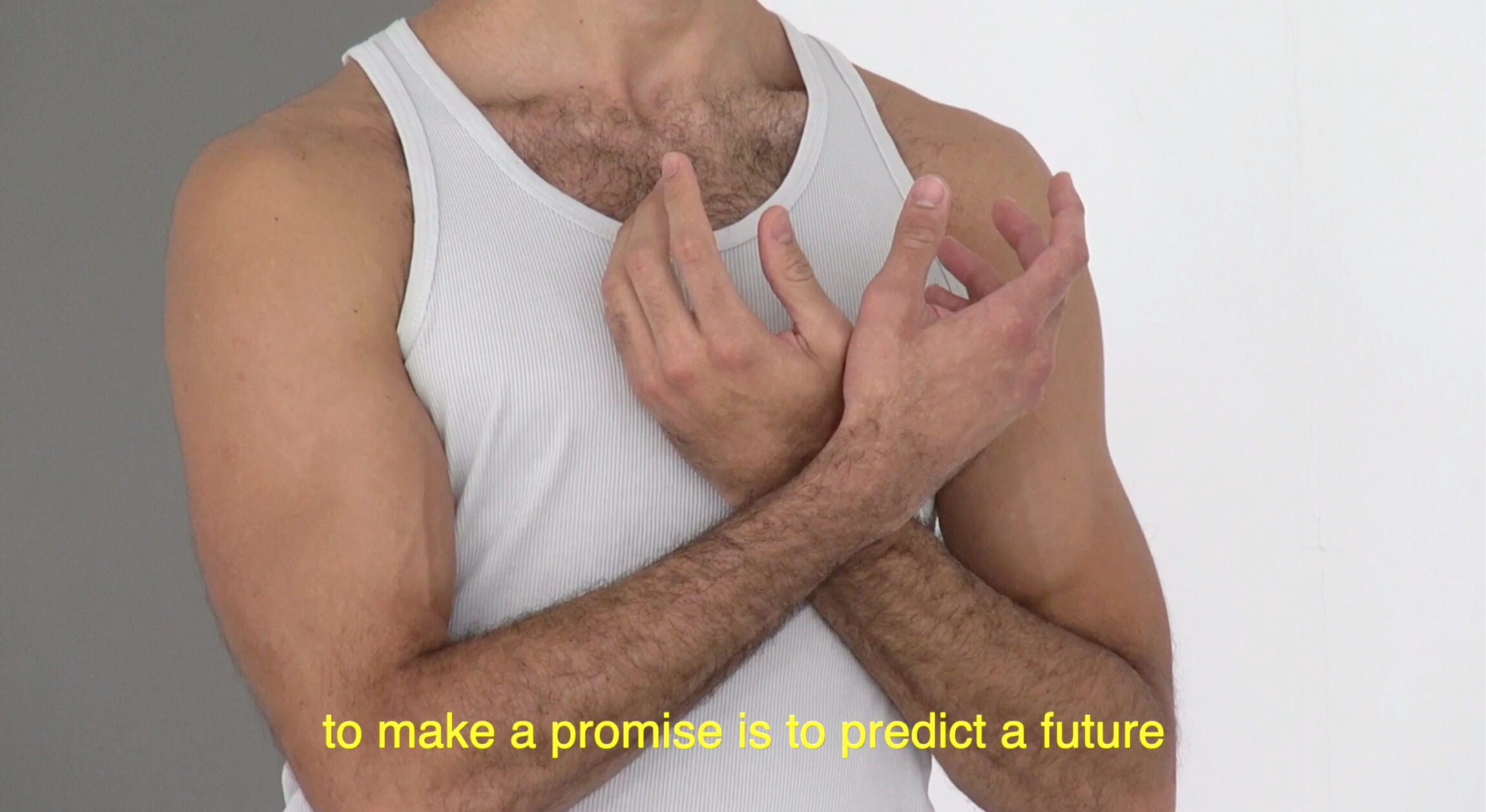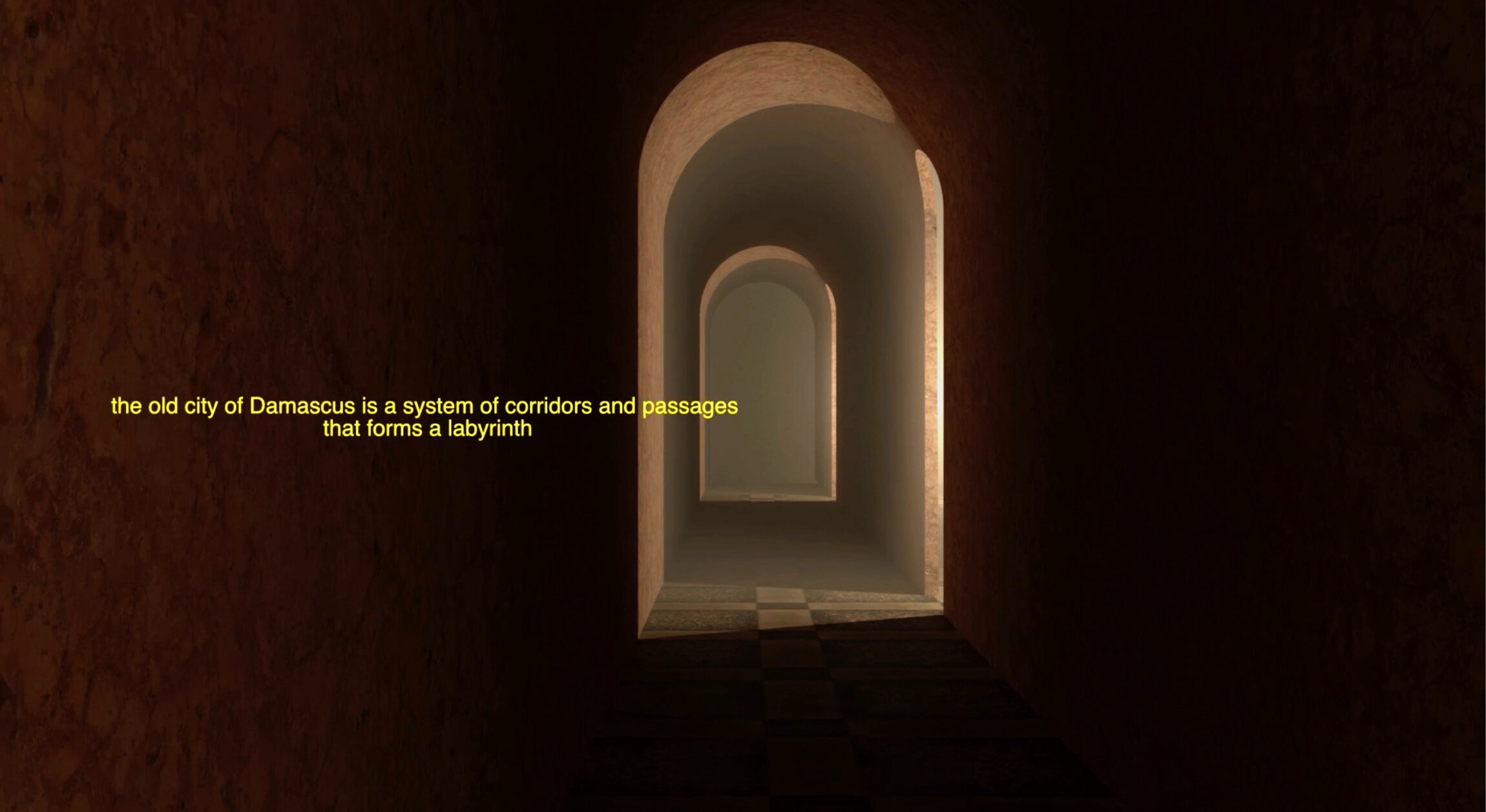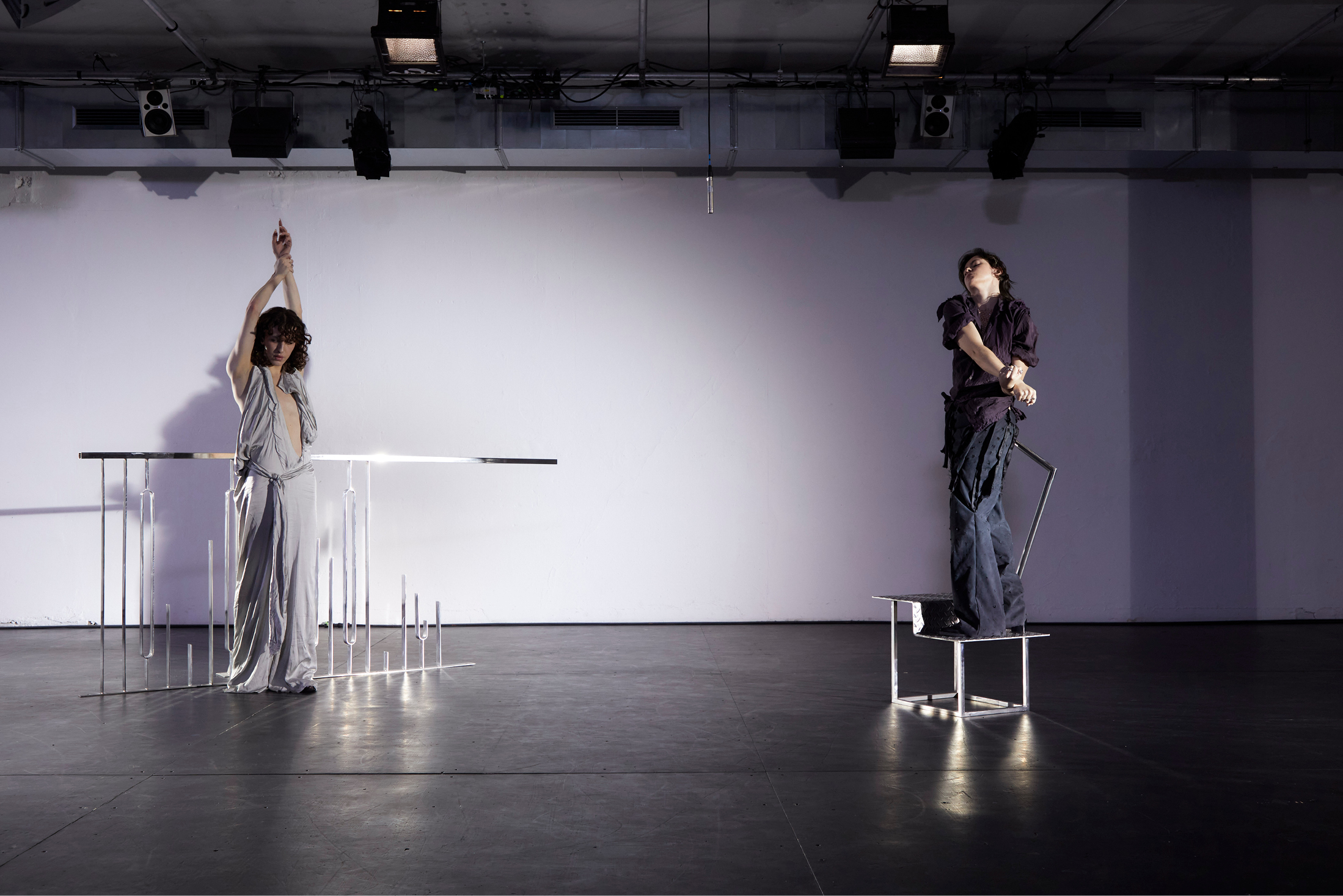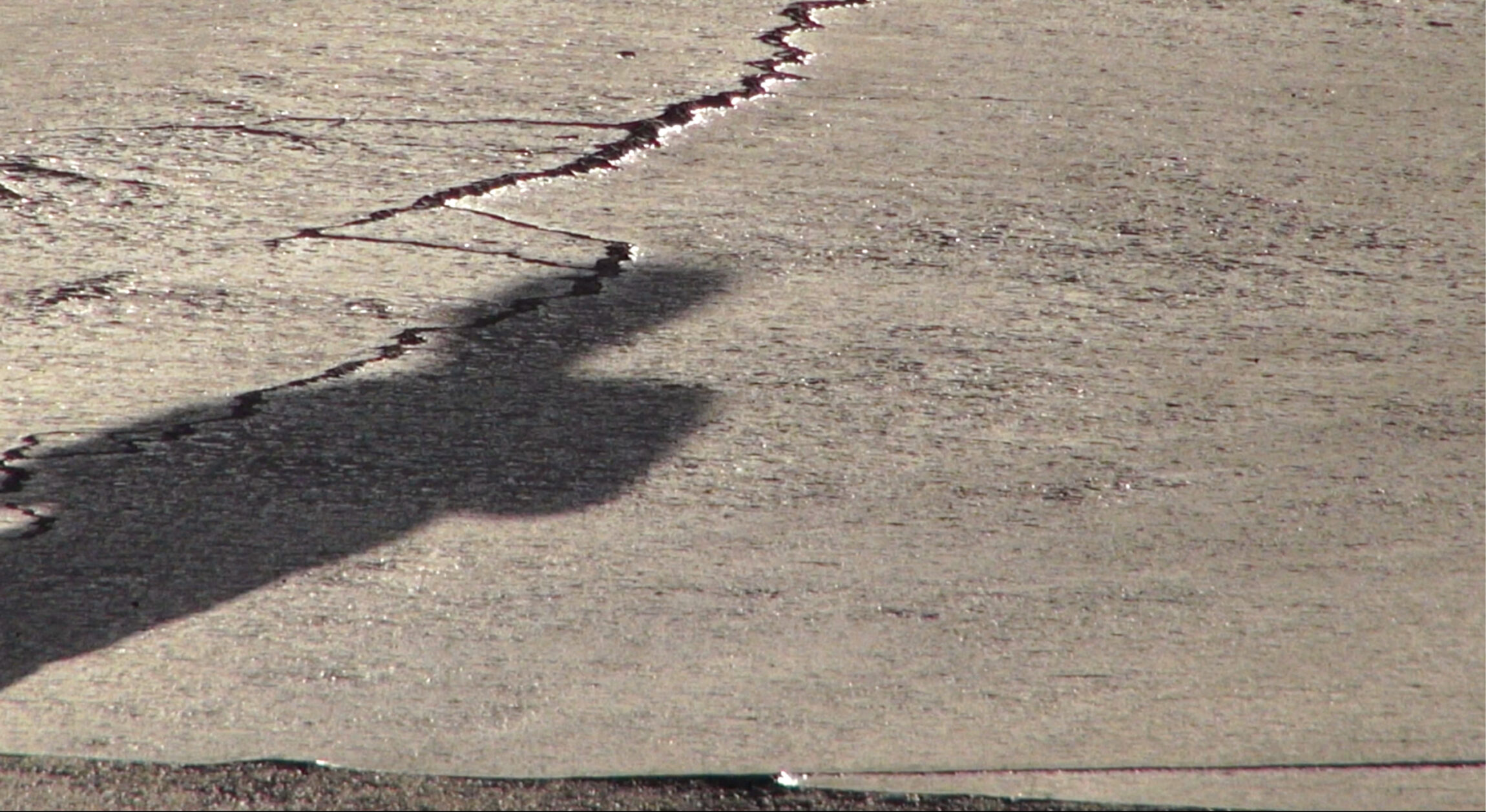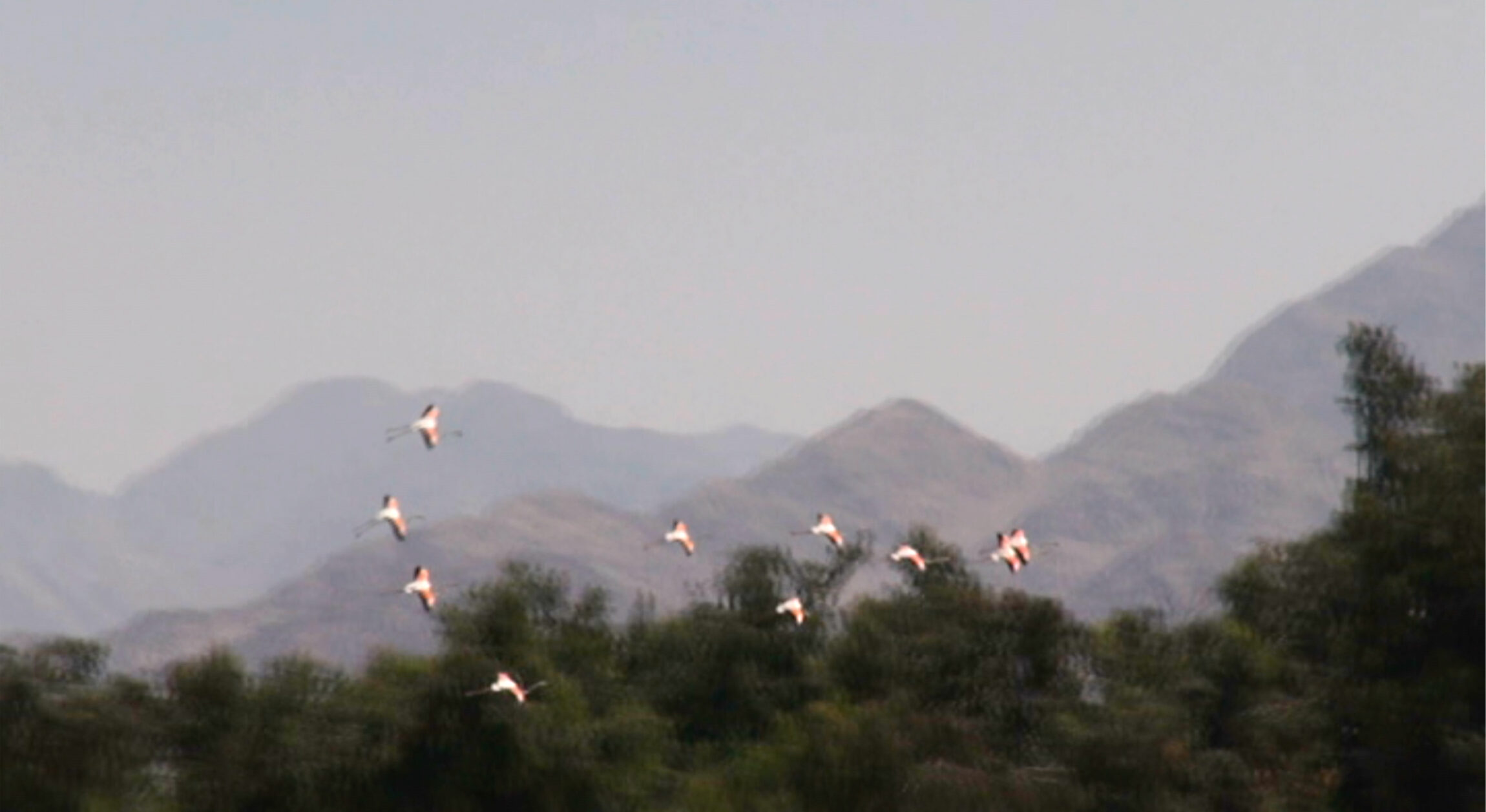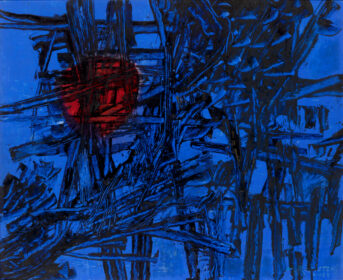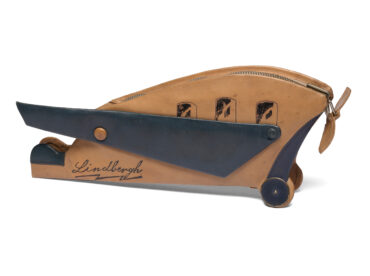Stipendiat Enad Marouf
Enad Marouf is a Syrian-German artist who lives in Berlin. Marouf’s work includes choreography, text, video and installation. He completed his master’s degree in choreography and performance at the Institute for Applied Theater Studies in Gießen/Frankfurt. His works and collaborations have been shown at the Athens Biennale, the Kunstenfestivaldesarts Brussels, the Shedhalle Zurich and the Neue Nationalgalerie Berlin, among others. In 2023 he was awarded the Will Grohmann Prize.
Elisa R. Linn (Elisa Linn Roguszczak) is an author, exhibition organizer and educator. She is co-director of the Halle für Kunst Lüneburg and teaches at Leuphana University and the AdbK Vienna. She is a graduate of the Whitney ISP and writes for BOMB and Jacobin, among others. She co-organizes the Club of Polish Failures in Berlin.
EL: For your most recent research project, “All Roads are Open,“ which will be the focus of this interview, you plan to employ the loci method, a popular strategy for memorizing information. What does this imaginary walking as a mode of mapping, where you work with personal, imaginative, and symbolic interpretations of space that go beyond their functional, territorial, or planned uses, imply for you?
EM: “All Roads are Open” started with the idea of filming streets in Lebanon, Jordan, and Egypt that have the same name as the ones in the country of my origin, Syria. I wanted to use this commonality as a way to come closer to the streets I used to once inhabit in Damascus. A way to come closer to the people and places I have lost. For me, this title is significant because it appears as an announcement after a blockade or a situation that prevented accessibility to these streets. I was interested in a research project with this specific title as an announcement to myself and to be able to access these streets back home that I don’t physically have access to.
EL: What does it mean to (re-)construct a map – to use a sort of “poetic geography“ as Michel De Certeau described it – and what kind of public or places are of importance for you in this process?
EM: For me the loci method is a concrete method to access these streets. For example: By mentally walking on Al Hamra Street in Damascus while in actuality walking on Al Hamra Street in Amman. My imaginary walk was guided by my camera movement, capturing the beginning of Al Hamra Street. Remembering Damascus, following the parliament building, the camera pans to the garden next to it, yet I was filming a shopping mall in actual time in Amman. I followed my imaginary walk with my camera through the street. Al Hamra Street in Damascus is mainly a long shopping street, similar to Al Hamra Street in Jordan. Aside from these configurational differences, what was becoming more discernible was the connection between tracing and recalling, memory and image.
EL: Your research project draws on your earlier works, such as the video work Memory. You are using 3D renderings of site-specific locations of queer cruising spaces in Damascus as well as footage of queer cruising spaces in Berlin. What role do the notions of incompleteness and remembrance play as an aesthetic strategy and theme in your practice?
EM: For me, the process of remembrance is a process of exteriorizing memories into a way of understanding. In order to remember these site-specific locations or to re-encounter them, I had to externalize them through these 3D renders. Interestingly, it was a very similar process as well when I was filming the streets in Amman. In order to remember the streets in Damascus, I had to externalize them through the camera movement from my memory— or looking at an image of a street that has the same name but is not the same street. This process makes the absent more present and the unfamiliar somewhat familiar through scrutinizing, abstracting, and destabilizing memories and the actuality of the space. In this research project or in my video work Memory, I am repurposing the loci method as a way of producing poetry and an aesthetic experience of navigation to follow up on your quote about De Certeau’s spatial production of “poetic geography.” EL: Here, I also have to think of the diversity of storytelling perspectives and the incompleteness of memories— those moments and realities that are never captured. For example, Ariella Aïsha Azoulay describes the potential of the “untaken photograph” that can take many forms: a verbal description, a testimony, a drawing, or a photograph of a re-enactment of the unphotographed event based on its description by one of the participants in that event.
How far are you interested in tracing marginalized and often oppressed experiences and life realities in your work that are not recorded or recognized in the dominant visual and historical narratives?
EM: The relationship between remembrance, image, and language plays an integral role in my performances and video installations. I mostly start with the personal as a way to articulate themes circulating around loss, grief, memory, desire and uncertainty. For me, Hannah Arendt binds personal and political thinking together where “thought arises from the living experience.” This coupling resonates with me both as a person and as an artist.
EL: In your video work Promise (2021), for example, which I first watched in the exhibition An AIDS Walkthrough at Instinct in Berlin in 2023, the camera focuses on the fragmented, intimate movement of the hands of a dancer and later their choreographed ballet steps without ever revealing their face or identity. Instead, in your video work, you seem to make the liminal condition productive by crossing identities, spaces, past and present time and overlaying the filmed material with a transcending conversation between a fictional’ me’ and a ‘you’ – the latter lived in the Middle East and experienced the AIDS death of a scene and its grieving aftermath.
What meaning do poetics of transition and ambiguity play in your practice?
EM: I think maybe because poetics of transition and ambiguity are inherent in the themes I work with, these notions become quite present in my practice. I have been explicitly working with fragmentation as an operative mode. I have been developing a practice of fragmentation. This is not only in terms of content—dealing with the fragmental nature of memory, loss, and desire— but also in terms of form: general aesthetic choices as well as my working methodology while developing works, their composition, strategies, and the chosen formats.
In the video work Promise, I decided to not reveal the identity or face of the dancers because I felt it was more personal and intimate as a viewer to have a sense of anonymity with the text and movement while watching the work. That is why I don’t mention the word AIDS in the text. I feel sometimes, when words are used within historical contexts, washed-out images and cliches might appear and the potentiality of the work fades into the background.
EL: How important are collage and montage techniques when working with video and text fragments that relate back to mnemonic techniques – putting bits of a puzzle together and forming a memory (which purposefully stays enigmatic)?
For example, while following the choreographed steps of the dancer in Promise, it reads: “Promise translates to Arabic as Wa’d. Mawa’d or Date shares the same Arabic root as Wa’d/Promise (…). Two different words share the linguistic root and a moment in time. A futurity of some sort.”
EM: Here, it was a method for me to work with the nonlinear weaving of events and allow a temporality of loss and recovery that is specific to the work.
EL: What meaning does dealing with other authors’ texts as material as something reusable that can be decontextualized and rewritten and eventually dissolve into something new (if not utopian) have for you? For example, you used references from Shoshana Zuboff’s The Age of Surveillance Capitalism (2018) to Hannah Arendt’s The Human Condition (1958).
EM: Writing is a central focus in my practice. I have been using quotes and anecdotes from theory, queer studies, and literature as meditative, intimate conversations, moving away from writing in a conventional academic argumentative tradition to personalize those themes and make them more tangible for me. This strategy helped me articulate my personal experience and my artistic work alike. I’ve been working with prose, poetry, and essayistic writing. As they have an open, fragmented form, I deem them most capable of articulating the fragmental nature of memory, grief, desire, and so on, allowing for a nonlinear procedure of articulation and aesthetic experience.
EL: This brings me back to the title of your research project, “All Roads are Open,“ which stresses non-linearity beyond the linear model of movement from origin to destination and normative ideas of belonging—such as exemplified by bird migration routes, which also play a role in your research project. At what stage of your research are you right now?
EM: The road carries with it a sense of openness. We use sentences like “on the road” as an indication of traveling, a state of constant transition, something I felt I really needed to address during this research project.
Especially with the devastating, volatile political situation in the Middle East at present, some of my travels have been canceled, delayed, or rescheduled. This stressed the inaccessibility of everyday life and movement in and out of certain areas, which also meant constantly negotiating the privilege of being in and out of the region. Nonetheless, I am halfway in my project, with some travels planned to Lebanon and Egypt for the whole of Autumn. I am currently looking at bird migration, especially since millions of birds travel twice a year between Europe, Asia, and Africa through what is called a bottleneck or a corridor of bird migration. This corridor starts at the Bosporus in Turkey and ends at the northern Egyptian coastal cities on the Red Sea. When I was in Jordan, I filmed the bird observatory and the team in Aqaba city. I also plan to visit the bird observatories in Lebanon and Egypt this Autumn, which is peak bird migration season, and continue filming several streets in both Beirut and Cairo. I guess there is a twofold reason why I became interested in bird migration. On the one hand, it is simply because mapping uses a bird’ s-eye view. On the other hand, I’m really interested in this biannual path that is steered through their gene memory using their own navigation techniques, which are largely unknown to us.
